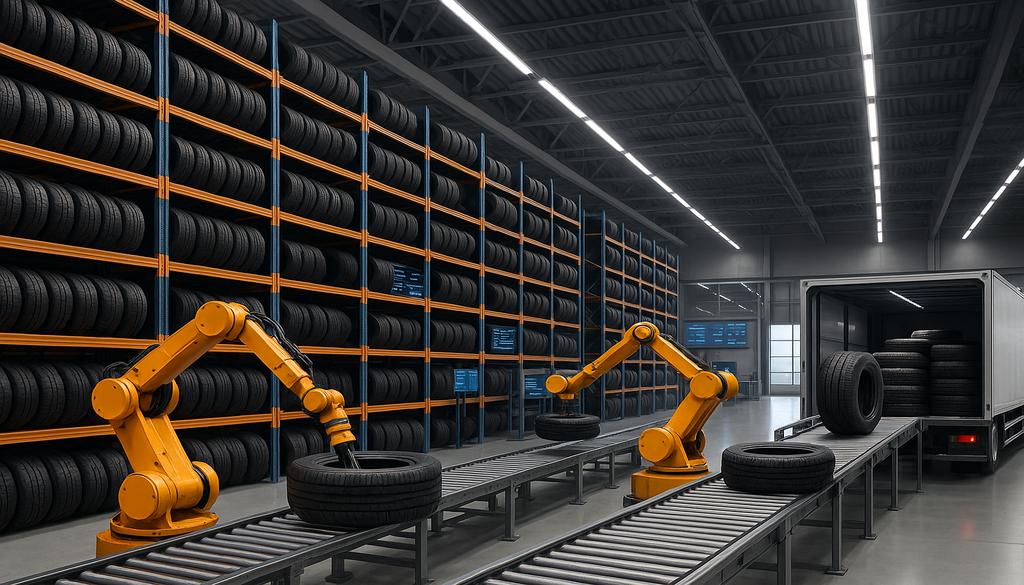Understanding Manufacturing Overhead Costs
Manufacturing overhead costs represent a significant portion of production expenses that cannot be directly attributed to specific products. These indirect costs play a crucial role in the overall financial health of manufacturing businesses, yet they often remain poorly understood or improperly calculated. Manufacturing overhead encompasses all production costs beyond direct materials and direct labor—essentially, any expense incurred in the manufacturing process that doesn't become a physical part of the finished product or isn't easily traceable to a specific unit.
The components that constitute manufacturing overhead costs are diverse and can vary significantly across different industries and manufacturing environments. Typically, these costs include factory rent and utilities, depreciation of manufacturing equipment and facilities, maintenance and repair expenses, production supervisor salaries, quality control personnel costs, and factory supplies that don't become part of the finished product. Additionally, overhead may include property taxes on manufacturing facilities, insurance on manufacturing assets, materials handling costs, and even certain regulatory compliance expenses specific to manufacturing operations.
Understanding the distinction between fixed and variable overhead costs is essential for proper financial management. Fixed overhead costs remain relatively constant regardless of production volume—such as facility rent, property taxes, and equipment depreciation. Variable overhead costs, conversely, fluctuate in proportion to production levels and include expenses like utilities, some maintenance costs, and certain factory supplies. This distinction becomes particularly important when analyzing cost behaviors and making production decisions based on financial considerations.
Proper identification and categorization of these overhead costs form the foundation for accurate cost accounting, pricing strategies, and profitability analysis. Without a comprehensive understanding of what constitutes manufacturing overhead, businesses risk underpricing their products, making uninformed operational decisions, or misallocating resources across different product lines. The complexity of manufacturing overhead requires systematic approaches to identification, measurement, and allocation—processes we'll explore in depth throughout this guide.
The Importance of Accurately Calculating Overhead Costs

Accurate calculation of manufacturing overhead costs represents a cornerstone of sound financial management and strategic decision-making in production environments. When overhead costs are improperly calculated or allocated, businesses risk developing flawed pricing structures that either leave money on the table through underpricing or drive away customers through excessive margins. This direct impact on pricing affects not just short-term revenue but long-term competitiveness and market positioning. Companies that master overhead cost calculations gain the ability to price products strategically, understanding precisely where profit margins come from and how to adjust them appropriately for different market segments or competitive scenarios.
The ripple effects of overhead calculation accuracy extend deeply into profitability analysis. Without precise overhead allocation, performance assessments of individual product lines or production departments become unreliable, potentially leading management to continue investing in unprofitable products while neglecting truly profitable opportunities. These miscalculations can persist for years, gradually eroding a company's financial health while remaining undetected in broader financial statements. Accurate overhead calculations provide clarity about which products genuinely contribute to company profits and which merely appear profitable due to overhead allocation errors.
From a budgeting and financial planning perspective, manufacturing overhead calculations serve as essential inputs to the forecasting process. Financial teams rely on these figures to develop capital expenditure plans, establish production targets, and create realistic operating budgets. When overhead calculations are robust and accurate, companies can confidently make forward-looking decisions about facility expansions, equipment investments, or production capacity adjustments. Additionally, precise overhead calculations contribute significantly to cash flow management, helping businesses anticipate and prepare for periods of heavier overhead burden or identify opportunities to smooth out irregular overhead expenses throughout the fiscal year.
Beyond internal financial management, accurate overhead calculations play a critical role in competitive analysis and strategic positioning. Understanding the true cost structure of products allows manufacturers to identify areas where efficiency improvements might yield the greatest financial returns. This knowledge helps prioritize cost-reduction initiatives, automation investments, or process reengineering efforts where they will have maximum impact on overall profitability. Furthermore, many manufacturers find that comprehensive overhead analysis reveals unexpected insights about their operations—such as which product characteristics or production methods generate disproportionate overhead costs—leading to innovative approaches to product design, production scheduling, or facility layout that competitors may have overlooked.
Step-by-Step Guide to Calculating Manufacturing Overhead Costs
The first step in calculating manufacturing overhead costs involves comprehensive identification of all relevant overhead components within your production environment. Begin by conducting a thorough audit of your manufacturing facilities, documenting every expense that supports production but doesn't directly become part of the finished product. This includes obvious costs like factory utilities, indirect labor (maintenance staff, production supervisors, quality control personnel), and facility-related expenses (rent, property taxes, insurance). However, don't overlook less apparent overhead categories such as depreciation of manufacturing equipment, production software licenses, regulatory compliance costs specific to manufacturing, and even certain administrative expenses that directly support production activities. Creating exhaustive expense categories ensures no significant overhead costs slip through the cracks during calculation.
Once all overhead components have been identified, selecting an appropriate allocation base becomes crucial for accurate calculations. The allocation base should logically relate to how overhead costs are incurred—common bases include direct labor hours, machine hours, direct materials cost, or units produced. For labor-intensive manufacturing, direct labor hours often serve as the most logical allocation base, while capital-intensive operations might find machine hours more appropriate. Some businesses require multiple allocation bases for different overhead cost pools to ensure accurate distribution across product lines. For instance, utility costs might be allocated based on machine hours, while quality control expenses might be distributed according to direct labor hours or units produced, depending on which metric better reflects the actual relationship between production activity and overhead cost incurrence.

The fundamental formula for calculating the manufacturing overhead rate is:
Manufacturing Overhead Rate = Total Estimated Overhead Costs ÷ Total Estimated Allocation Base
For example, if a furniture manufacturer anticipates $500,000 in annual overhead costs and expects 25,000 direct labor hours, their overhead rate would be $20 per direct labor hour. This rate can then be applied to each product based on the labor hours it requires. If manufacturing a dining table requires 5 direct labor hours, the overhead cost allocated to each table would be $100. This calculation provides a systematic way to distribute overhead costs proportionally across different products, ensuring each bears its fair share of the production support expenses.
Practical implementation requires regular reconciliation between estimated and actual overhead costs—a process known as overhead variance analysis. At the end of an accounting period, compare the overhead costs applied to products (based on the predetermined rate) with the actual overhead costs incurred. Significant variances warrant investigation and may indicate changes in production efficiency, overhead spending patterns, or miscalculations in the original overhead rate determination. These variances must be properly accounted for, either by adjusting inventory values or recognizing them directly in the cost of goods sold, depending on company policy and accounting standards. Regular variance analysis not only improves accounting accuracy but also provides valuable feedback to refine future overhead calculations.
Activity-based costing (ABC) represents an advanced approach to overhead calculation that many sophisticated manufacturers implement to achieve greater precision. Unlike traditional methods that use broad allocation bases, ABC identifies specific "cost drivers" for different overhead activities. For instance, instead of allocating all quality control costs based on labor hours, ABC might allocate them based on the number of inspections required for each product. Similarly, material handling costs might be allocated based on the number of components in each product rather than production time. Though more complex to implement, ABC often reveals that low-volume, high-complexity products consume disproportionately more overhead resources than traditional allocation methods suggest, leading to more accurate product costing and strategic insights.
Common Challenges in Calculating Overhead and How to Overcome Them
Inaccurate allocation of overhead costs represents one of the most persistent challenges manufacturers face when calculating overhead. Many businesses default to simplistic allocation methods—such as distributing all overhead costs based solely on production volume—which can significantly distort the true cost of different products. This misallocation particularly affects companies with diverse product lines where certain products require substantially more overhead support than others despite similar direct costs. For example, small-batch specialty products often consume disproportionate setup time, quality control resources, and production planning effort compared to high-volume standard items. To overcome this challenge, implement multi-factor allocation systems that consider the unique characteristics of different product lines, such as production complexity, number of components, setup requirements, and special handling needs. Activity-based costing principles can dramatically improve allocation accuracy by linking specific overhead costs to the operational activities that drive them.
Seasonal fluctuations and production volume variations create another significant challenge in overhead calculation. When production levels rise and fall throughout the year, overhead costs per unit change accordingly, potentially leading to inconsistent pricing and profitability assessments across different time periods. During low-production months, fixed overhead costs must be absorbed by fewer units, artificially inflating the per-unit cost, while high-production periods may show unusually low overhead per unit. This variability complicates financial analysis and strategic decision-making. Address this challenge by implementing normalized overhead rates based on expected annual production volumes rather than current monthly activity. This approach smooths out seasonal variations, providing more consistent cost information for pricing and profitability analysis. Additionally, separately track and analyze volume variances to understand how production fluctuations affect true product costs without distorting ongoing financial evaluations.

The outdated or irrelevant allocation bases challenge emerges as manufacturing processes evolve but overhead allocation methods remain static. Many companies continue using traditional allocation bases like direct labor hours even after automating significant portions of their production process, essentially linking overhead costs to a factor that no longer drives those costs. This misalignment leads to increasingly inaccurate cost calculations as manufacturing technology advances. Overcome this challenge by periodically reassessing whether your allocation bases still reflect the fundamental drivers of overhead consumption in your current manufacturing environment. When processes change substantially—such as through automation, outsourcing, or production redesign—allocation methods should be reevaluated and potentially reconfigured to maintain accuracy. Consider modern factors like machine processing time, system complexity, or technological infrastructure requirements that might better reflect overhead cost drivers in today's manufacturing environments.
Properly accounting for technology and automation costs presents a growing challenge as manufacturers increasingly invest in advanced production systems. Traditional accounting practices may classify some technology investments as periodic capital expenses rather than incorporating them appropriately into ongoing overhead calculations. This approach can disconnect production costing from the technology resources actually consumed during manufacturing. To address this challenge, develop comprehensive technology overhead pools that capture all aspects of your manufacturing technology infrastructure—including equipment depreciation, software licensing, IT support staff, system maintenance, and technology upgrades. Allocate these technology overhead costs based on metrics that reflect actual technology utilization by different products, such as processing time, data storage requirements, or automation complexity. This approach ensures that products benefiting from technology investments bear appropriate portions of those costs in their overhead allocations.
Tools and Software Solutions for Managing Manufacturing Overhead Costs
Enterprise Resource Planning (ERP) systems have revolutionized the management of manufacturing overhead costs by integrating various operational functions into a unified data ecosystem. Modern ERP platforms specifically designed for manufacturers—such as Oracle NetSuite Manufacturing Edition, SAP S/4HANA Manufacturing, or Microsoft Dynamics 365 Supply Chain Management—provide comprehensive overhead tracking capabilities that automatically capture and categorize indirect costs across the organization. These systems excel at connecting financial data with operational metrics, allowing manufacturers to correlate overhead expenses with specific production activities, departments, or product lines. The real-time visibility offered by ERP systems enables proactive management of overhead costs rather than retrospective analysis, alerting managers when overhead spending deviates from established benchmarks or when allocation patterns suggest inefficiencies in certain production areas. Furthermore, advanced ERP solutions incorporate predictive analytics that can forecast overhead cost trends based on production schedules, seasonal patterns, and historical data, giving financial teams valuable insights for budgeting and strategic planning.
Specialized cost accounting software provides manufacturers with targeted tools for overhead calculation and allocation that may offer greater flexibility than broader ERP systems. Applications like Sage Intacct Manufacturing, Plex Manufacturing Cloud, or specialized modules within QuickBooks Enterprise for Manufacturing deliver purpose-built functionality for complex overhead allocation scenarios. These systems typically offer multiple allocation methodologies—including traditional volume-based allocation, activity-based costing, and hybrid approaches—allowing manufacturers to select the most appropriate method for different overhead cost pools. Advanced cost accounting software can perform sophisticated what-if analyses to model how changes in production volume, product mix, or overhead spending would affect unit costs across different scenarios. This capability proves invaluable when evaluating potential process changes, considering new product introductions, or assessing the financial impact of production scheduling alternatives. Additionally, these specialized tools often provide robust audit trails and documentation of allocation methodologies, which supports compliance requirements and provides transparency in cost calculations.
Manufacturing execution systems (MES) contribute significantly to overhead cost management by providing granular, real-time data about production activities that generate overhead costs. Solutions like Prodsmart, Tulip, or Shopfloor-Online capture detailed information about machine utilization, worker activities, maintenance events, quality control processes, and other operational factors that drive overhead consumption. By integrating MES data with financial systems, manufacturers gain unprecedented visibility into the relationship between shop floor activities and overhead costs, allowing for more accurate and meaningful allocation. This integration enables the identification of specific production processes, equipment types, or operational practices that generate disproportionate overhead expenses. For example, MES data might reveal that certain machines require significantly more maintenance attention or that particular product configurations consistently trigger quality control issues requiring additional overhead resources. This actionable intelligence helps manufacturers target process improvements precisely where they will have the greatest impact on overhead cost reduction.
Business intelligence (BI) and analytics tools provide the visualization and analytical capabilities needed to transform raw overhead cost data into strategic insights. Platforms such as Power BI, Tableau, or Domo enable manufacturers to create interactive dashboards that display overhead cost trends, allocation patterns, and variance analyses in formats that facilitate quick understanding and decision-making. These tools excel at identifying correlations between operational metrics and overhead consumption that might not be apparent through standard financial reports. For instance, visualization might reveal that overhead costs spike during production runs of specific product variants or when certain suppliers' materials are used. Advanced BI solutions also support scenario modeling to evaluate potential changes to overhead allocation methodologies or to simulate the overhead impact of proposed operational changes. This capability helps financial and operational teams collaborate more effectively on overhead management initiatives, with shared visibility into both the financial implications and operational contexts of overhead costs. Many manufacturers find that implementing robust BI solutions for overhead analysis represents a relatively low-cost investment that yields significant returns through improved decision-making and cost management.
Best Practices for Reducing Manufacturing Overhead Costs
Implementing lean manufacturing principles represents one of the most effective approaches to systematically reducing overhead costs while simultaneously improving operational efficiency. Lean methodologies directly target waste elimination in all forms—including overproduction, waiting time, unnecessary transportation, excess inventory, defects, and underutilized talent—many of which drive significant overhead expenses. By mapping value streams and identifying non-value-adding activities, manufacturers can systematically reduce or eliminate processes that consume overhead resources without contributing to product value. For example, implementing cellular manufacturing layouts can reduce material handling costs and associated overhead, while visual management systems minimize the administrative overhead required for production tracking and quality control. Companies that have successfully applied lean principles, such as automotive parts manufacturer Lear Corporation, have reported overhead cost reductions of 15-30% through systematic waste elimination. The beauty of the lean approach lies in its focus on process improvement rather than simple cost-cutting, ensuring that overhead reductions come from genuine efficiency gains rather than potentially damaging resource constraints.
Energy efficiency initiatives offer substantial overhead cost reduction opportunities in manufacturing environments where utilities represent a significant portion of indirect expenses. Comprehensive energy management programs typically begin with detailed audits to identify major consumption sources and inefficiencies throughout production facilities. Strategic upgrades to lighting systems, HVAC equipment, compressed air systems, and insulation can deliver immediate and ongoing overhead savings. For example, food processor Kraft Heinz implemented an energy management system that reduced factory energy consumption by over 20%, directly lowering their overhead cost structure. Beyond equipment upgrades, many manufacturers achieve additional savings through operational changes like production scheduling that minimizes peak energy demand charges or preventive maintenance programs that ensure equipment operates at optimal efficiency. The most successful energy reduction initiatives typically combine technological improvements with employee engagement programs that encourage shop floor workers to identify and address energy waste in daily operations. These combined approaches not only reduce direct energy costs but also frequently extend equipment life and reduce maintenance overhead.
Strategic outsourcing of non-core overhead functions allows manufacturers to convert fixed overhead costs to variable expenses while potentially improving service quality through specialized expertise. Functions commonly considered for outsourcing include maintenance services, janitorial operations, security, certain quality control processes, and specialized administrative functions. The overhead reduction comes not just from eliminating internal staffing and associated costs but also from gaining economies of scale that specialized service providers can achieve. For instance, electronics manufacturer Jabil Circuit outsourced facility maintenance across multiple locations, reducing overall maintenance overhead by approximately 22% while improving response times and equipment uptime. When evaluating outsourcing opportunities, manufacturers should carefully analyze both direct cost comparisons and indirect benefits like access to specialized expertise, improved scalability, and reduced management complexity. The most successful outsourcing initiatives maintain clear performance metrics and service level agreements that ensure outsourced functions support manufacturing excellence while delivering the anticipated overhead cost reductions.
Technology-driven automation and digitization initiatives represent increasingly important strategies for overhead cost reduction in modern manufacturing environments. Beyond the direct labor savings commonly associated with automation, these initiatives can dramatically reduce overhead requirements across multiple categories. Advanced planning and scheduling systems minimize the overhead resources needed for production coordination and materials management. Automated quality inspection systems reduce quality control overhead while simultaneously improving detection rates. Digital documentation and workflow systems eliminate many administrative overhead costs associated with paper-based processes. Medical device manufacturer Medtronic implemented digital workflow solutions that reduced administrative overhead in their production documentation by over 30% while improving compliance and traceability. Similarly, automotive supplier Continental AG deployed IoT-based predictive maintenance systems that reduced unplanned downtime by 20% and maintenance overhead costs by approximately 15%. The most effective technology initiatives for overhead reduction focus not merely on automating existing processes but on fundamentally reimagining workflows to eliminate unnecessary steps and information transfers that drive administrative overhead.
Conclusion
Accurately calculating and managing manufacturing overhead costs represents a critical competency for production-focused businesses seeking to maintain profitability and competitive advantage. As we've explored throughout this guide, overhead calculation extends far beyond simple mathematical formulas—it requires thoughtful identification of cost components, selection of appropriate allocation methodologies, and regular refinement based on operational realities. Manufacturers that master these processes gain crucial visibility into their true cost structures, enabling more informed pricing strategies, product development decisions, and process improvement initiatives.
The comprehensive approach outlined in this guide—from basic overhead identification through advanced allocation techniques—provides a framework that can be adapted to manufacturing operations of any size or complexity. By implementing appropriate technology solutions, addressing common calculation challenges, and pursuing strategic overhead reduction initiatives, manufacturers can transform overhead management from a necessary accounting function into a source of competitive advantage. The case studies and examples provided demonstrate that systematic approaches to overhead management consistently yield measurable improvements in financial performance and operational clarity.
As manufacturing environments continue to evolve with increased automation, digital transformation, and changing production methodologies, so too will approaches to overhead calculation and management. Forward-thinking manufacturers should view overhead management as an ongoing journey of refinement rather than a fixed accounting procedure. By maintaining this perspective and implementing the practices outlined in this guide, businesses can ensure their manufacturing overhead calculations provide the accurate cost insights needed to thrive in increasingly competitive markets.
Frequently Asked Questions (FAQ)
Q1: What are some common items included in manufacturing overhead costs?
Common items included in manufacturing overhead costs encompass facility-related expenses such as rent, utilities (electricity, water, gas), and property taxes for manufacturing spaces. Equipment-related costs include depreciation of machinery, maintenance and repair expenses, and calibration services. Personnel overhead includes salaries and benefits for indirect production staff like supervisors, quality control personnel, maintenance teams, and material handlers. Other significant components include production supplies that don't become part of the final product, safety equipment, waste disposal costs, production software licenses, and insurance on manufacturing assets and operations. Regulatory compliance costs specific to manufacturing operations, such as environmental permits or specialized certifications, also form part of the overhead structure.
Q2: How often should a business reevaluate its overhead costs?
A business should review overhead costs at least annually during the budget planning process to ensure allocation rates remain accurate for the upcoming fiscal year. However, more frequent evaluations are advisable when significant operational changes occur. These trigger events might include implementing new production technologies, adding product lines, experiencing substantial volume changes, reorganizing production facilities, or facing major changes in utility or facility costs. Quarterly reviews are increasingly common among manufacturers seeking to maintain accurate costing in dynamic environments. Additionally, when variance analysis shows consistent discrepancies between applied and actual overhead, this signals the need for immediate reevaluation of the overhead calculation methodology or rates, regardless of the regular review schedule.
Q3: Can technology significantly reduce manufacturing overhead costs?
Yes, technology can significantly reduce manufacturing overhead costs through multiple mechanisms. Automation technologies minimize indirect labor requirements for material handling, quality inspection, and production coordination. Advanced maintenance management systems extend equipment life and reduce repair costs through predictive maintenance approaches. Energy management systems and smart utilities can reduce facility overhead costs by 15-30% in many manufacturing environments. Digital documentation and workflow systems dramatically reduce administrative overhead associated with production tracking, compliance, and quality management. Cloud-based manufacturing software reduces IT infrastructure costs while improving accessibility and scalability. The most substantial technology-driven overhead reductions typically come not from simply digitizing existing processes but from fundamentally reimagining workflows to eliminate unnecessary steps and overhead-generating activities.
Q4: What is the formula for calculating manufacturing overhead costs?
The basic formula for calculating manufacturing overhead costs involves two key steps. First, determine the overhead rate by dividing total estimated overhead costs by the selected allocation base: Overhead Rate = Total Estimated Overhead Costs ÷ Total Estimated Allocation Base (e.g., direct labor hours, machine hours, or units produced). Second, apply this rate to individual products by multiplying the overhead rate by the amount of the allocation base used by that product: Overhead Applied to Product = Overhead Rate × Amount of Allocation Base Used. For more sophisticated calculations, manufacturers may use multiple overhead cost pools with different allocation bases for each pool. For example, utility costs might be allocated based on machine hours, while quality control costs might be allocated based on number of inspections. Activity-based costing expands this approach further by identifying specific cost drivers for different overhead activities and allocating costs based on consumption of those drivers.
Q5: Are there industry-specific considerations when calculating manufacturing overhead costs?
Yes, different industries face unique overhead considerations based on their production environments and regulatory landscapes. Process manufacturing industries (like chemicals, food, and pharmaceuticals) typically have higher utility and compliance overhead costs compared to discrete manufacturing, requiring allocation methods that accurately reflect these factors. Industries with strict quality standards, such as medical devices or aerospace, carry significant overhead for quality assurance, testing, and documentation that must be appropriately allocated. Seasonal industries face special challenges in normalizing overhead across periods of vastly different production volumes. Heavy equipment manufacturers with long production cycles require overhead allocation methods that account for extended timeframes. Highly regulated industries must include compliance-related overhead costs that may not exist in other manufacturing sectors. Industry-specific benchmarks and allocation methodologies have developed within many manufacturing sectors, providing valuable reference points for businesses seeking to optimize their overhead calculations for their particular production context.




